After reading about COVID-19-related water supply vulnerabilities, I decided to invest in a long-overdue prep for my family: a heavy-duty gravity-fed water filter.
Why had I not bought one sooner? To be frank, there’s a haze of snake oil around the entire market, and these units aren’t cheap, so I hesitated.
But I decided that if we had to turn to the creeks and streams around us for drinking water, it was better to have something than nothing.
I considered the Big Berkey recommended in the roundup of the best countertop water filters, but decided it was a bit more than I wanted to spend. I went with the cheapest option, one that’s often recommended by preppers in the know: a “DIY Berkey” system from St. Paul Mercantile. Here’s what you need to know:
- All of these systems have nearly interchangeable parts
- St. Paul Mercantile has the lowest cost of entry, not the lowest long-term cost
- The AquaMetix filters sold by St. Paul Mercantile are a great choice for fluoride filtration
- While Berkey is currently sold out in most places due to COVID, St. Paul Mercantile has largely stayed ahead of demand
- Lab tests indicate that all of these gravity fed water filters do a good job, but each has strengths and weaknesses
What does St. Paul Mercantile sell?
The company mostly deals in so-called gravity-fed water filters. This kind of water filter was popularized by Berkey and Alexapure and has been a prepping staple for years. They’re sold under many different brands, but they’re all fundamentally the same. They consist of two stainless-steel buckets. The top bucket holds the water to be filtered and has holes drilled in the bottom to accept filter elements. You pour the water into the top bucket and it flows through the filter elements into the bottom bucket, which has a spigot to dispense the water.
If you’re thinking that you could just use food-grade buckets in lieu of the stainless buckets, yes, you can. However, plastic buckets aren’t as durable as stainless steel and many people have concerns over plastic leaching.
What sets these systems apart from devices like the Zerowater dispenser is the durability and open-source nature of the systems. All the filter bodies are more or less identical. You could buy a Berkey filter body, throw in Alexapure filters, and it should work. They’re fundamentally simple devices. Simplicity and ruggedness are important factors in any survival situation.
Sounds great, what’s the catch? For one, these systems are expensive: anywhere from $150 to over $600. They’re also enormous—my Crystal Drop filter body is 20.25 inches tall when assembled, which makes them tricky to place in most kitchens.
More: Best home water filters
NSF International Certification
Another complication: most of these gravity-fed filters are not certified by NSF International, while mass-market filters like Brita are certified. That’s part of why Wirecutter does not recommend the Berkey or filters like it. And some states, most notably California, ban such filters entirely because the manufacturers will not have them certified.
Berkey claims to meet or exceed NSF International standards and claims that the certification is too expensive to be worthwhile. There’s probably at least some truth to that, but it makes the entire market hazy. John Squires of St. Paul Mercantile, who once sold Berkey filters, told me that NSF International certification can cost upwards of one million dollars. All of these manufacturers claim to meet or exceed NSF International standards, though as NSF International points out, that also leaves questions.
However, the Propur filters have been certified by NSF International, though only for “aesthetic effects,” which means non-health-related contaminants that would make your water taste or smell bad.
A lack of NSF International certification doesn’t necessarily mean that these filters are ineffective. We have procured lab reports that demonstrate their effectiveness, although, as I’ll explain below, they’re not identical and are thus hard to compare directly.
What sets St. Paul Mercantile apart
There are a few things that set St. Paul Mercantile apart from brands like Berkey and Alexapure and their resellers. For one, the website isn’t the least bit fancy. The company’s owner and founder, John Squires, is a plainspoken man and that comes through in all the copy on his site.
St. Paul Mercantile has been in business for over 20 years. The company originally specialized in preparedness foods in the leadup to Y2K. The business had a downturn after the turn of the century, and Squires eventually retooled the business to focus on water filters. He originally sold Berkey filters, then later switched to Doulton because they were cheaper, and then finally to AquaCera.
(If you’re wondering why it’s called St. Paul Mercantile even though the owner is named John Squires and it’s based out of Maryland, Squires quipped, “Because I was stupid.” He was living in St. Paul temporarily when he started the business and the name stuck.)
Ordering a filter from St. Paul Mercantile is not quite as straightforward as purchasing from another company. Until the company recently released discounted bundles, you had to piece your own kit together. But this isn’t nearly as difficult as people make it seem.
First, choose a body
First, you choose a stainless steel body (you could even just use a couple of five-gallon buckets). They’re made out of #304 stainless steel, and come in six sizes: 1 quart, 1 gallon, 1.6 gallon, 2.4 gallon, 3.5 gallon, and 4.5 gallon. Squires provides a handy table to choose which body is right for you based on family size, which also tells you how many filters a body can hold and how large those filters can be.
For instance, the 2.4-gallon “regular” has four filter holes, comes with rubber plugs to fill unused holes, and can provide enough water daily for 2-4 people.
Squires sells some of his older #202 stainless steel bodies for 50% off. The older #202 regular stainless bodies are much cheaper than the newer #304—$50 vs $120. Squires says he upgraded the stainless because the warranty claims for rust on the #202 was too high at 10%, but those bodies have the same warranty as the #304 bodies.
Speaking of the warranty, every part is covered in full for the first year. In the second year, you can buy a malfunctioning part for 50% off and free shipping.
Then, choose a filter
After you choose a body, you need to choose your filters. The ones sold by St. Paul Mercantile are made by AquaCera, and they’re made in America. Let me clear up some confusion about AquaCera’s brands:
- AquaCera is the manufacturer of the filter elements.
- CeraMetix is the brand name of AquaCera’s ceramic filters.
- AquaMetix is the brand name of a core in the higher-end CeraMetix filters which improves filtration. St. Paul Mercantile refers to these as simply AquaMetix, as do I in this review.
- Another name for the AquaMetix filter is CeraMetix AMB, which stands for AquaMetix Block. St. Paul Mercantile interchangeably refers to AquaMetix and CeraMetix AMB, which is confusing, but they are the same thing.
- AquaMetix GB is a carbon-block filter intended only for municipal water. I do not discuss these in this review.
Note that the filter bodies are not AquaCera brand. The older models are the Crystal Drop brand, while the newer bodies do not have any branding.
I bought two of the AquaMetix 9-inch filters. These are the top-tier filters St. Paul Mercantile sells, and claims to effectively filter out fluoride, pesticides, herbicides, chromium, and heavy metals in addition to bacteria and chemicals. Each one costs $49 and they are made in America.
How many filters to buy depends on how patient you are and how many your filter body can hold. Having more filters doesn’t improve filtration, but it does speed it up. Squires states in his instructions that “ceramic candles usually produce ½ to 1 quart of water per candle per hour when the candles are new or have been recently cleaned.” Filtration is faster when the top chamber is full and gets slower as it drains. I would recommend at least two filters for the regular-sized body, and four (the maximum) if you can swing it. I later purchased two more candles and found that filtration was dramatically faster.
St. Paul Mercantile sells both seven-inch and nine-inch versions of its filters. The only difference between the two is that the nine-inch filter offers somewhat faster filtration, assuming you fill the top pot enough to take advantage of the extra two inches.
Upgrades, discounts, and shopping cart analysis
I’d consider spending $12.50 on a stainless steel spigot, which is both more robust and provides a much faster flow rate. You’ll also want a 3/4-inch socket on hand to install it. The included plastic one is pretty flimsy, though it didn’t give me any trouble. One advantage the plastic spigot has is you can press it down to get a quick hit of water or flip it up to get a steady stream. The stainless spigot only turns on and off. However, the flow rate of the stainless spigot is so much better that I think it’s superior.
All in all, I spent $164.89 after shipping for the body and two filters. The Big Berkey, which is out of stock and does not filter fluoride without an additional filter, starts at $278. The Alexapure Pro, which includes only one filter, officially starts at $269.95, though it can be found slightly cheaper.
Right now, St. Paul Mercantile is offering discounted bundles. You can get a 2.4-gallon #304 stainless body, a stainless steel spigot, and four seven-inch CeraMetix AMB ceramic candles for $265. And, best of all, it’s in stock! If I knew that deal was coming, I would have opted for it instead of the older stainless body.
I later bought the stainless spigot and two more candles for $119.57 including shipping, bringing my total investment to $284.46. I’d have been better off buying one of the bundles, but I don’t regret the upgrades since they drastically improve filtration speed and water flow. However, I spent the most time with the plastic spigot and two candles, so that’s mostly what I review here.
I asked Squires how he’s able to sell these so cheap. He told me he buys them in bulk from the supplier—AquaCera for the filter candles and a factory in India for the filter bodies. Squires said most of the stainless fitler bodies on the market come from that same factory.
One of the oddities about St. Paul Mercantile is that Squires sells “dollars,” which lets you add upgrades to your order if you request them in the comments. For example, for the bundle I just described, you can upgrade to the nine-inch candles (which speeds up filtering) by adding an extra $20 to the order. I personally find this system kind of charming, but I could see how it could scare off some people.
Unboxing the St. Paul Mercantile package and setting it up
The packaging has absolutely no frills. It comes in a plain white box.
Here’s what was in my box:
- Filter body top
- Filter body bottom
- Plastic base ring
- Lid
- Two AquaMetix filter candles, wrapped in bubble wrap
- Invoice
- Instructions
- Packet
- Lid handle
- Spigot
- 4 plugs (to fill unused filter holes)
Be extremely careful with the ceramic candle filters. The outside is essentially chalk, so it could break easily. When screwing a candle into the body, be sure to grip it by the plastic base, not the chalky bit. That will get more difficult the more filters you install. When I finally installed a fourth filter, my hand could barely fit.
Setup is straightforward:
- Wash the lid, body, and spigot with hot, soapy water.
- Attach the handle to the lid. You’ll need a phillips screwdriver to do so.
- Attach the spigot to the bottom pot per the instructions.
Next, clean the filter candles, either with a 3M scrub pad or high-grit sandpaper. As I said, these candles are pretty chalky. Cleaning them only requires a light touch. Do not use soap. Rinse, run your scrubber over it, and rinse again. This is to open the pores in the candle.
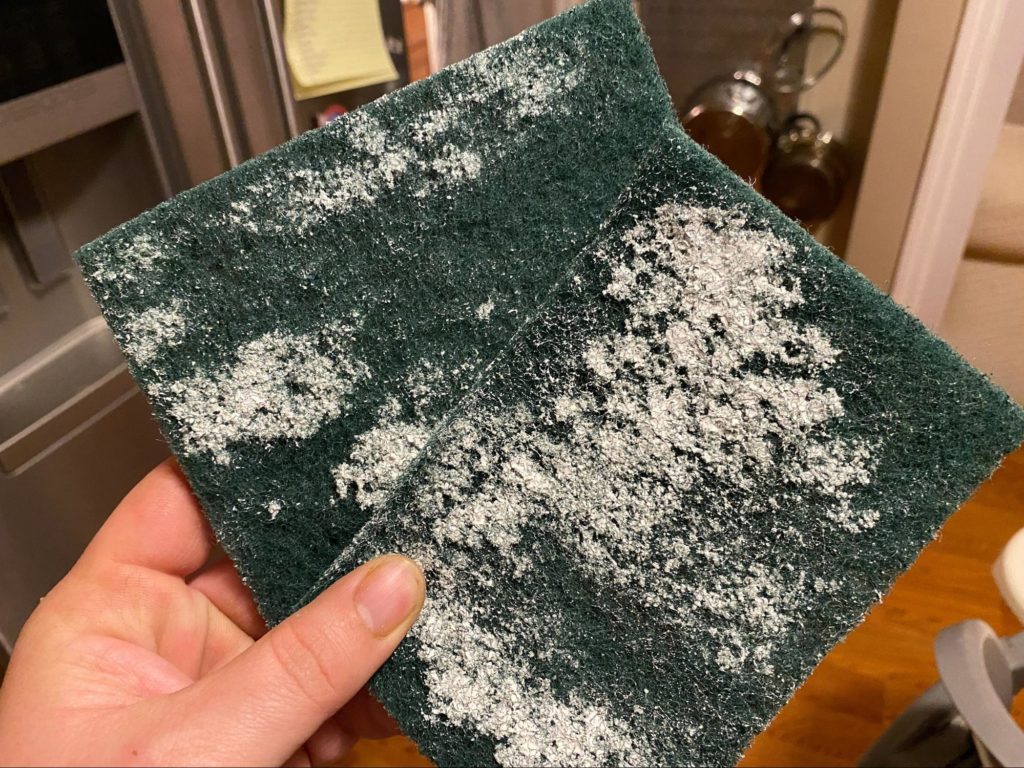
You then need to screw the candles into the top pot. The regular-sized filter body has four holes.
- Take the plastic nut off the bottom of the candle,
- insert the threads into the holes from the top,
- and then attach the nut underneath.
The instructions warn to grip the candle by the plastic base and to not twist the candle itself. That’s easier said than done after two filters are installed. Shove the included plugs into any empty filter holes.
Finally, you need to do a “dry run” to finish cleaning the filter candles.
- Fill the top chamber,
- wait for it to filter,
- dump out the water,
- and clean the bottom pot.
You’re now ready to filter water.
You can set the whole unit in the plastic base ring, which is more for aesthetics than for any practical purpose.
Troubleshooting common problems
The way these filters work is pretty simple: pour water into the top chamber and let it flow through the filters into the bottom chamber. Retrieve the filtered water from the spigot. Simple, right?
However, filling the top pot in the first place can be tricky. It just sits on the bottom pot, so I picked it up, filled it with water at the sink, and placed it on the bottom pot. But 2.4 gallons of water is pretty heavy, and the filter threads are stick out of the bottom so you can’t really set the pot down anywhere. If that sounds like something you can’t manage, fill it halfway, set it down, and then use a pitcher or something to finish filling the top pot.
I recommend regularly adding a bit more to the top pot to keep the bottom full. Remember, it can take hours to filter your water, so you want to keep the supply going. But be careful doing this, as there’s nothing to prevent the bottom pot from overflowing.
Placement of the filter body can be tricky, since it’s enormous and needs clearance for the spigot. I put mine on the edge of a kitchen counter, since that’s the only place it would fit. You might consider a stand for the filter body, or just pile it on top of some old phone books.
More: Best emergency water storage containers for your home
Filter care and lifespan
Let’s talk about how to maintain the candle filters and how long they last. If filtration slows down, you can refresh the candles with a 3M scrub pad or sandpaper, just as you did before the first installation.
The filters are ceramic on the outside, which filters living organisms, sediment, and bacteria. Inside is a carbon filter that removes chemicals. There is also silver inside the candle to prevent bacterial growth.
John Squires from St. Paul Mercantile says that while the carbon element will eventually expire, the ceramic, which filters out bacteria, can be refreshed for years, up to 100 times. In the instructions, he mentions that some filters have lasted for 50 years or more.
In summary, he offers three guidelines on when to replace filters:
- Once a year, which is the manufacturer recommendation.
- Whenever the filters stop removing bad tastes and smells.
- If you have 4 filters, after you filter 3200 to 4000 gallons.
Each filter has a lifespan of 800-1000 gallons, so equipping the body with more filters extends the total lifespan.
To save money, Squires says you can run water through a cheap Brita filter before or after running it through the candles to reduce bad tastes and smells, because the ceramic will still remove bacteria and other nasties. He also suggests pre-filtering especially dirty water through a coffee filter to extend candle life.
Testing filtration effectiveness
In part because NSF International certification is elusive for gravity-fed filtration systems, people have come up with other tests to measure filter effectiveness and safety. Here’s how St. Paul Mercantile’s systems stand up.
The red-dye test
The filters St. Paul Mercantile sells, AquaMetix filters, do not pass the “red dye” test advertised by Berkey. For that test, Berkey simply adds red food coloring to the unfiltered water.
“That test is a gimmick,” Squires writes on the St. Paul Mercantile FAQ page. “Carbon Block filters, available everywhere, will remove dyes from water. But Carbon Block filters are not designed to remove bacteria and living organisms. Ceramic filters will not remove red dye.”
Interestingly, Propur, whose filters are almost visually identical to the AquaCera filters, recommends a blue food coloring test to check effectiveness.
Mike Adams’ toxic elements test
Mike Adams, the proprietor of Natural News and the self-described “Health Ranger” ran tests on Crystal Drop filter bodies, which St. Paul Mercantile sells. In his tests of water filters, he stated of the Crystal Drop (again, this is the brand name of the stainless filter bodies, not the filter element itself):
The Crystal Drop water filter performed quite poorly compared to the other water filters in this testing. Its ability to remove toxic elements from water was shown to be significantly low enough that the unit should not be considered a reliable tool for the removal of toxic elements from water.
St. Paul Mercantile has a lengthy response to these tests available on the website. The response includes the following points:
- Adams’s tests only looked at heavy metals, not bacteria or chemicals.
- He did not equip the Crystal Drop with a filter that promotes heavy metal filtration, while the Berkey unit tested had all optional filters equipped.
- Mike Adams sells the Berkey filters in his store. Adams claims that he did not agree to a partnership with Berkey until the tests were performed. It’s reasonable for a business to choose to affiliate with the filter that did the best in its own tests, but it still brings up questions about bias. Also, Adams is a close associate of Alex Jones, who sells the competing Alexapure Pro in his Infowars Store.
Analyzing lab results for ourselves
CeraMetix provides a lab report from Envirotek Laboratories, Inc. out of Bordentown, New Jersey which looks promising. They tested for and seemingly did an effective job of removing a large list of contaminants, including volatile organic contaminants, pesticides, heavy metals, herbicides, and pharmaceuticals. St. Paul Mercantile links to this study on their filter page, so I assume it’s a fair enough analysis.
I compared Envirotek reports provided by Alexapure, Berkey, Propur, and St. Paul Mercantile. It doesn’t take a data scientist to quickly see that the AquaCera filters did not perform as well as the Berkey or the Alexapure. It’s hard to compare these side by side, since the reports are not identical, so I picked out a few common contaminant concerns:
- Arsenic: Alexapure: 99.9+%, AquaCera: 95.2%, Berkey: 99.9%, Propur: 99.7%
- Copper: Alexapure: 99.9+%, AquaCera: 99.5%, Berkey: 99.9%, Propur: 89.8%
- Fluoride: Aquacera: 97.5%, Alexapure: 75%, Berkey: 99.9%, Propur: 97.5%
- Lead: Alexapure: 99.9+%, AquaCera: 98.7%, Berkey: 99.9%, Propur: 99.9%
- Progesterone: Alexapure: 99.9+%, AquaCera: 96.1%, Berkey: 99.5%, Propur: 94.6%
Unfortunately, the Berkey results didn’t include glyphosate (the Alexapure and AquaCera both filtered 99.9% of that while the Propur filtered 100%), and the AquaCera results didn’t include microbes.
The AquaCera filter performed worse than the Berkey in all of the above areas, and was worse on most contaminants than the Alexapure, though the AquaCera blew the Alexapure out of the water on fluoride filtration. The NSF International-certified Propur filter had largely mediocre performance, worse in most ways than the AquaCera, especially on copper.
A comparison of prices, flow rates, and lifespan
We’ve established that the AquaCera filters aren’t quite as effective as its competitors, but how do they compare on price? Let’s tally up how much each “regular-size” system costs when equipped with the best filtration. And, really, if you’re going to be filtering questionable waters sources, you don’t want to skimp.
At St. Paul Mercantile, a bundle with the #304 stainless steel body, four 9-inch AquaMetix filters, and a stainless steel spigot costs $285 before taxes or shipping.
The Big Berkey costs $388 when equipped with four filters. But to maximize filtration, you’ll also need four of the flouride filters, which filter other heavy metals besides fluoride, and that’ll run you an extra $120. So you’re looking at $508 for a maxed-out Big Berkey. Also, the fluoride filters sit in the bottom chamber, so they undoubtedly reduce the water storage capacity.
The Alexapure Pro costs $269.95 and comes with only one filter although the body can hold four. Each additional filter costs $119.95 but no additional fluoride filter is required. So you’re looking at a total of $629.80 for a fully loaded Alexapure Pro.
The Propur Big costs $279 and includes two seven-inch filter elements. Nine-inch elements are also available, but since you can’t buy the body by itself, I’ll use the seven-inch filters for comparison. Also, it only supports three filters, which cost $74.50 each. So it’d cost $353.50 for a fully loaded Propur Big.
When it comes to filtration effectiveness, the Berkey comes out on top, but the AquaMetix setup can still save you hundreds of dollars. But is that savings for the long term? Let’s look at the best-case lifespan advertised by each supplier:
- Alexapure: 5000 gallons per filter (20,000 gallons for four filters)
- AquaMetix: 1000 gallons per filter (4000 gallons for four filters)
- Berkey: 3000 gallons, BUT each set of fluoride filters only lasts 1000 gallons
- Propur: 1200 gallons per filter
This is where the Berkey stumbles and Alexapure actually comes out somewhat ahead.
Here’s how much each filter costs per 1000 gallons, including the additional fluoride filter for the Berkey:
- Alexapure: $23.99
- AquaMetix: $49.00
- Berkey: $70 total—$40 for the main filter, plus $30 for one fluoride filter
- Propur: $62.92
Despite the high upfront cost, the Alexapure is significantly cheaper per gallon, with the AquaMetix somewhere in the middle. Note that the Alexapure and Berkey numbers are based on the prices on their own websites. The Alexapure products are typically cheaper when purchased from MyPatriot Supply or the Infowars Store. (As I write this, Infowars sells the Alexapure starter set for $239.95 and MPS sells the filters for $97 or $87.30 if you set up a six-month subscription).
Finally, let’s compare flow rates of each filter:
- Alexapure: Up to four gallons (16 quarts!) an hour.
- AquaMetix: Up to a quart an hour.
- Berkey: Up to seven quarts per hour.
- Propur: Up to a little over a quart an hour.
Of course there are many factors that determine flow rate, such as the contamination level of your water, age of the filter, And cleanliness of the filter. These are best-case numbers, but the Berkey and especially the Alexapure have a big advantage here.
Performance tests
The leak test
For my first test, I plugged all four holes with stoppers to see if they’d leak. I was afraid that it would be possible for unfiltered water to soak through or drip around the edges. After washing the body, I dried it thoroughly, plugged the four holes, and put about three inches of water in the top section.
I let it sit for about an hour, and noticed no wetness in the bottom chamber. However, on a later run, I took a drink out of the bottom chamber and noticed a chlorine taste. I lifted the top chamber and noticed water swiftly dripping from the plugs. I’m not sure if it was plug failure or user error, but in either case I would not recommend using these plugs, because unfiltered water could leak around them. You can either buy four candles, which will tightly screw in place and seal the holes, or you could buy some Berkey screw-in hole plugs, which should fit and form a tight seal.
John Squires of St. Paul Mercantile told me that he ran out of rubber stoppers in March and switched to corks. The first batch leaked and he replaced them with better ones. He hopes to be shipping rubber corks again by mid-June.
I then pulled two of the plugs and installed two filters. I placed them at opposite ends to even out filtration as much as possible.
Following the instructions, I filled the top chamber with tap water for a “cleaning run.” John Squires advises that this first run of water is safe to drink, but may taste bad, which I found to be true. I should also note here that I have municipal water, which isn’t fluoridated.
It took a full night for the first filtration run. I dumped all the water out and filled the top chamber again. However, I forgot to clean the bottom pot, so the first few glasses were slightly gritty, though the taste was fine. That grittiness eventually faded.
We used the filter regularly for a few days, topping it off with tap water. One surprisingly handy use was dumping in abandoned glasses of water that had sat overnight and grown stale. The water all came out clean and very much “filtered” tasting, meaning bland and rather flat. My six-year-old son ended up preferring the water from the “water machine” to the cold filtered water our refrigerator dispenses.
The mud test
Satisfied with my first set of results, I decided to test the filter with an even dirtier source. Filtering municipal water isn’t much of a challenge, and the true purpose of buying this filter was to cleanse water from the nearby spring and creek. The creek water can be particularly nasty, with upstream cattle runoff and the locals dumping various unsavory things in.
The hill above our house leads to a cattle pasture to which a neighboring rancher regularly drives. One of his tractors had left a large rut in the path, creating an accidental swale teeming with tadpoles and other goodies. There is also an oily sheen on the water, hinting at some sort of chemical contamination.
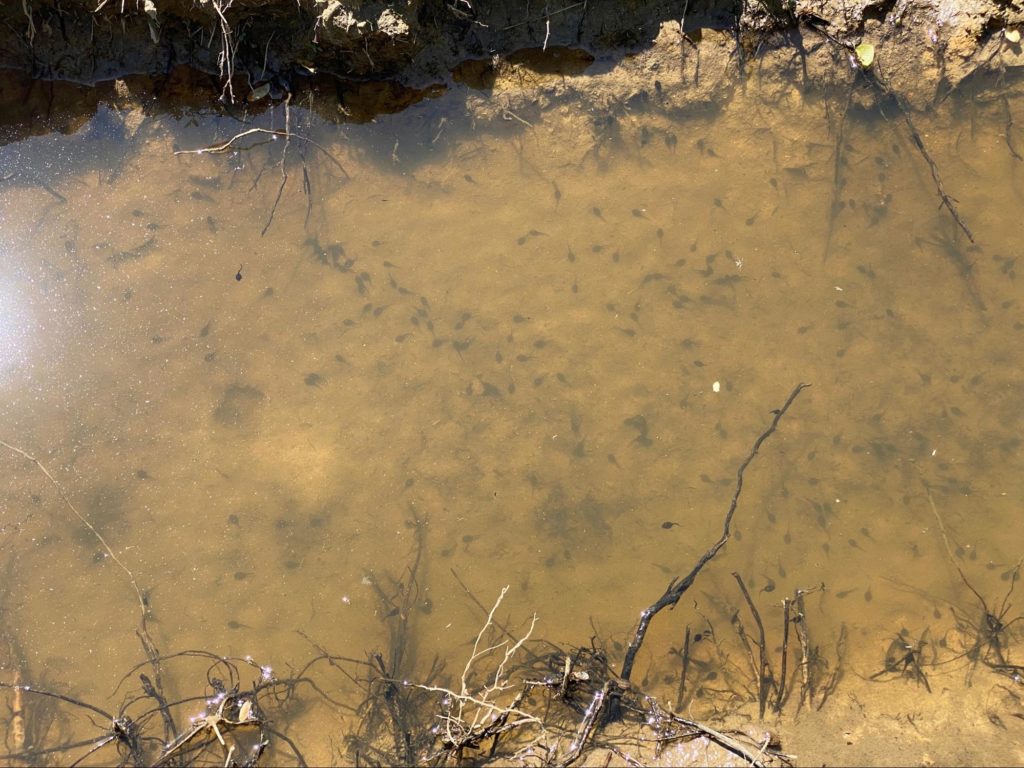
I filled a bucket with some of this dirty water and hauled it downhill.
I let the covered bucket sit overnight, which gave time for some of the mud to settle in the bottom. I emptied the filter body entirely, placed a bandana over the top chamber to filter out larger particles, and then poured in the muddy water.
The water filtered much slower than usual. It’s hard to say whether that was from the dirtiness of the water or the relatively small amount. Because the system is gravity-fed, the more water in the upper chamber, the faster the flow rate. However, what dripped down was crystal clear.
After a couple of days of filtration, there was just a bit of dirty water in the top chamber, along with some mud.
We’re planning to do full lab tests on the three major gravity filter brands (Berkey, Alexapure, and St. Paul Mercantile) in the future, but until we have confidence in such a test, I decided to do a few somewhat less scientific tests.
I drained some of the filtered swamp water into a clear mason jar. There were no detectable smells (and I tend to have a sensitive nose), and the water was crystal clear.
I drank the small amount I had dispensed. It tasted slightly bitter, but otherwise fine. The rest I poured into some plants, which seem to be doing just fine, and I gave some to my dog, who tends to drink out of mud puddles anyway. Interestingly, despite it being a hot day, she wouldn’t touch the filtered water. Maybe she knows something I don’t. In any case, I didn’t suffer any ill effects from drinking the filtered swamp water.
I asked Squires about this test, and he seemed completely unfazed. He told me that missionaries often buy bulk candles from him to take to their destinations. There, they source buckets to use as filter bodies to provide clean drinking water. “They’re primarily used in locations with worse water than what you have,” he said.
After this stress test, I broke the entire filter down and cleaned it, including the mud-stained ceramic candles, which turned white again after a scrub. Subsequent filtration seemed fine, except for the plugs leaking.
Thankfully, I had a couple of spare unused plugs, so I was able to quickly return to filtering. Subsequent pots of water seemed to filter about the same as before my dirty water test.
Another interesting note: I’ve had a hard time growing sweet potato slips this spring. You grow them by suspending a seed potato halfway in water. I read somewhere that chlorine in tap water stunts slip growth, so I replaced the water with water from the filter. It was an almost overnight improvement. Existing slips grew much taller and potatoes that had barely produced started to sprout.
If I had to depend on this filter to purify my family’s water supply, I would first choose the cleanest possible source, in my case a neighboring spring that’s uphill of livestock contamination. And I would perhaps consider boiling the water after filtering it.
More: Best portable survival water filters
Our recommendation
Bottom line: do I recommend buying an AquaCera-equipped gravity-fed water filter from St. Paul Mercantile? Yes. Here’s why:
- The filter body, which is identical to competitors, costs less, and if you go for the lower-quality stainless steel, significantly less.
- The overall upfront costs are the least of the three.
- No bulky special filter is required for fluoride filtration, and it roundly beats the Alexapure’s fluoride filtration capabilities.
- The AquaCera filters are made in America.
- St. Paul Mercantile is doing a better job of keeping inventory in stock than the competition.
But here are the cons:
- Overall slightly less effective than a fully equipped Berkey.
- More expensive to operate than the Alexapure.
- Filters do not last as long as the Alexapure.
With all that said, here are my recommendations:
If you’re skeptical about gravity-fed filters and want to try one out without an expensive outlay, go with St. Paul Mercantile. You can buy a basic set with two candles like I did, but I’d recommend one of the bundles that includes the stainless spigot and four candles. The stainless spigot is a big upgrade in flow rate and maxing out the candles likewise makes filtration take a lot less time.
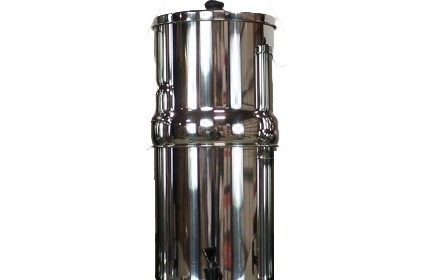
Try a filtration system
St. Paul Mercantile Full System
If all you care about is filtration effectiveness and money is no object, get a Berkey if you can.
If you can invest in a higher upfront cost and are not concerned about fluoride, the Alexapure Pro is a good option in terms of lifetime cost and long filter life.
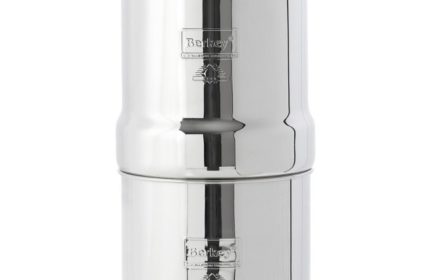
Big Berkey Water Filter
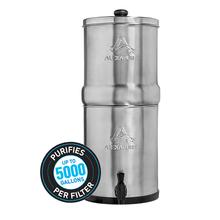
Alexapure Pro Filtration System
If NSF International certification is important to you, get the Propur filters.
You could also buy the filter body from St. Paul Mercantile and then use whatever brand of filter you’d like, which would save you some money. These units are fairly “hackable,” so you could do something like drill holes in a couple of buckets, slap on a stainless St. Paul Mercantile spigot, put Alexapure filters in the top, and Berkey fluoride filters on the bottom. I haven’t tried this myself, so I can’t tell you for sure if that would even work, but it should in theory. If you’ve built your own frankenfilter, I’d love to hear about it.
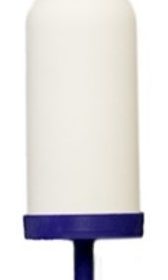
Propur Filters
But in any case, I strongly recommend having some sort of water purification system in place.
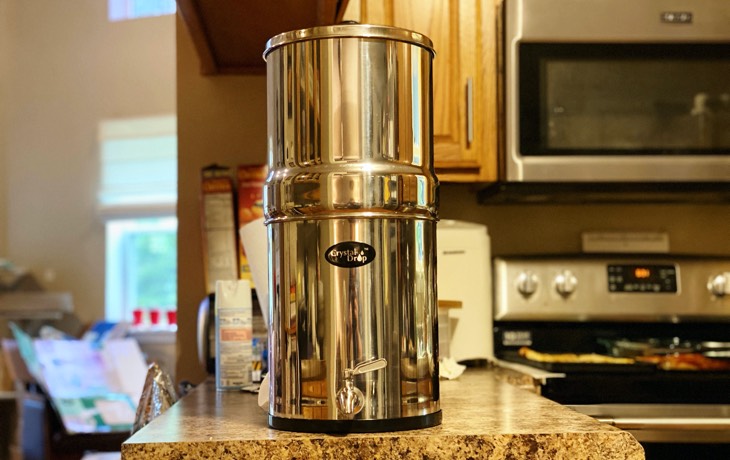
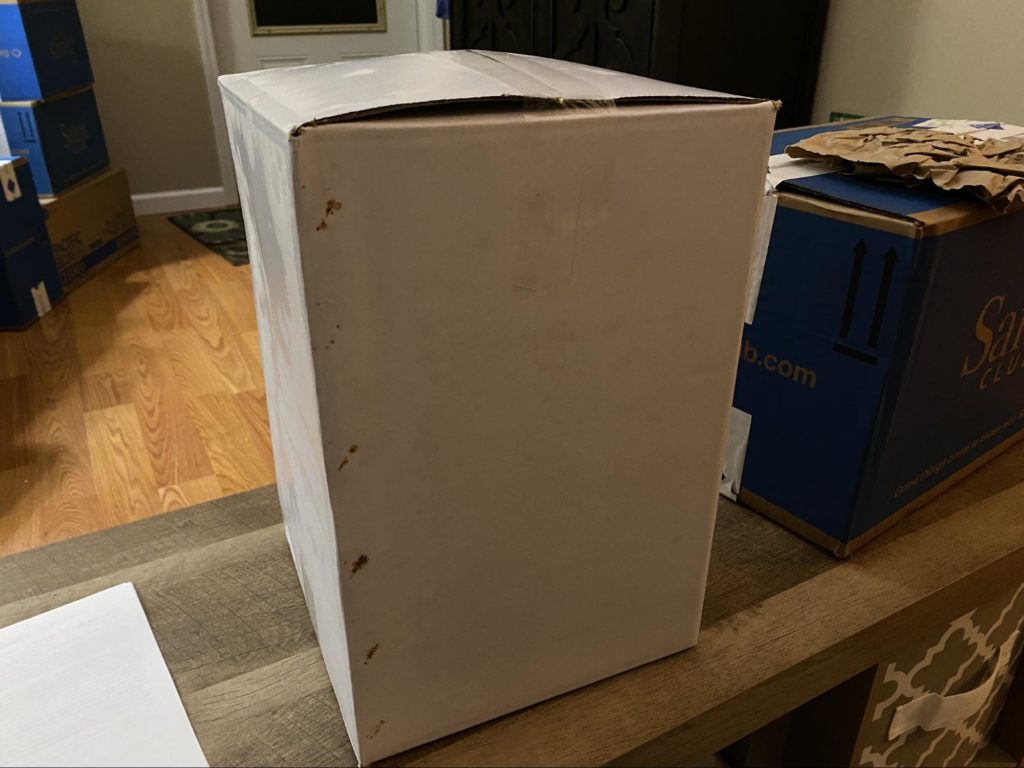
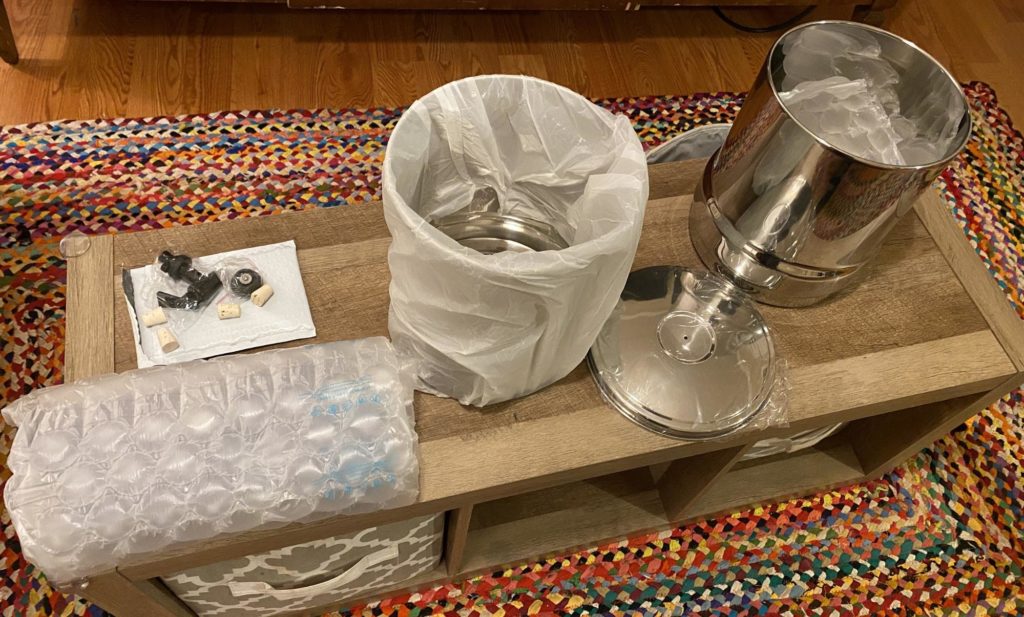
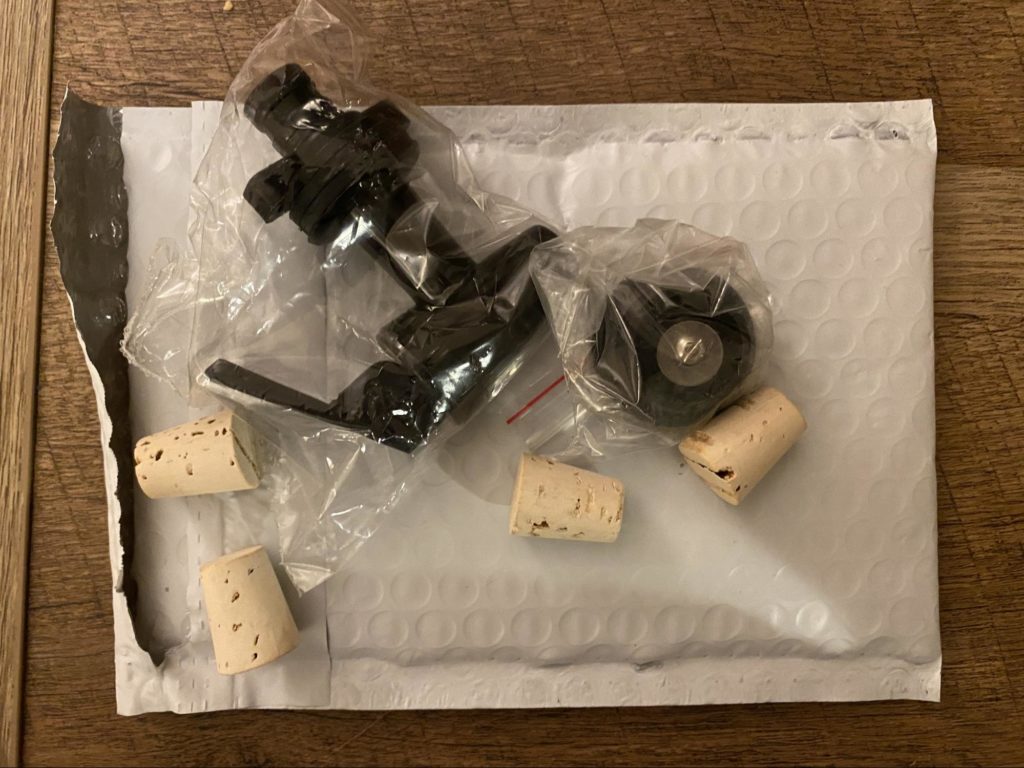
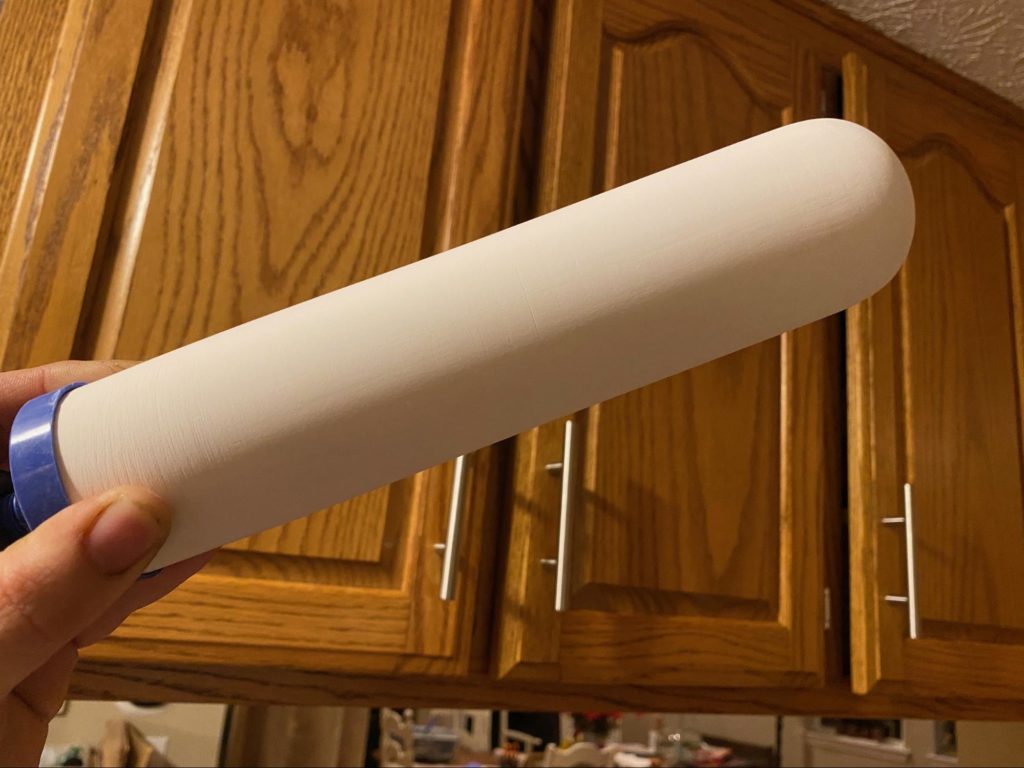
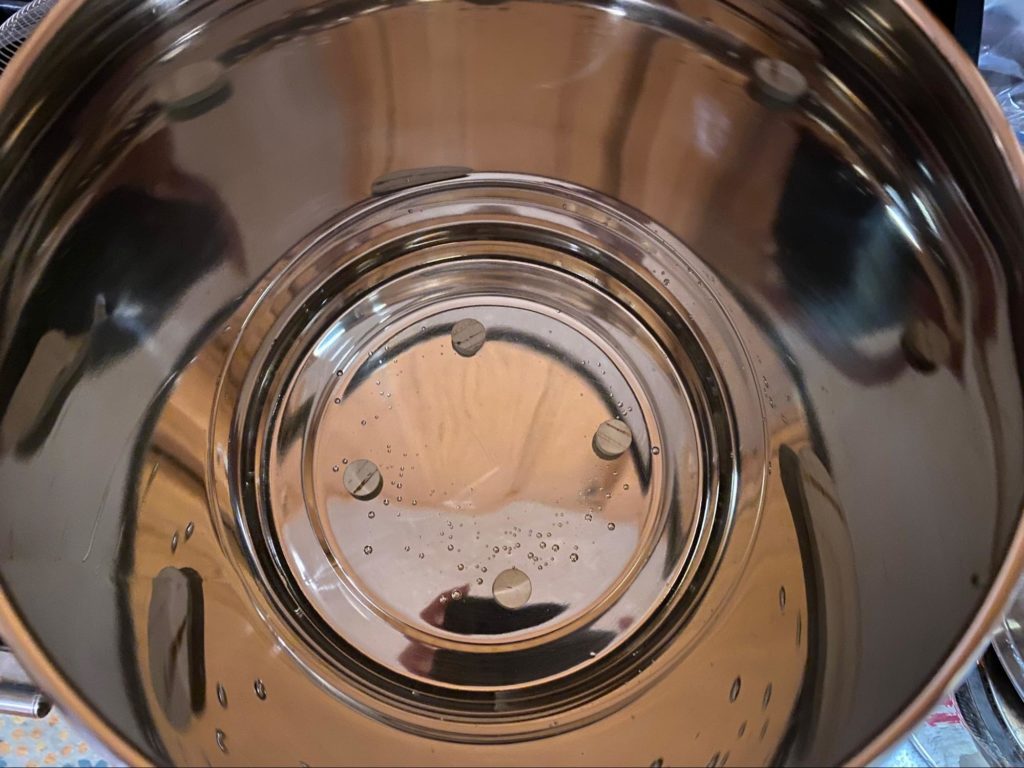
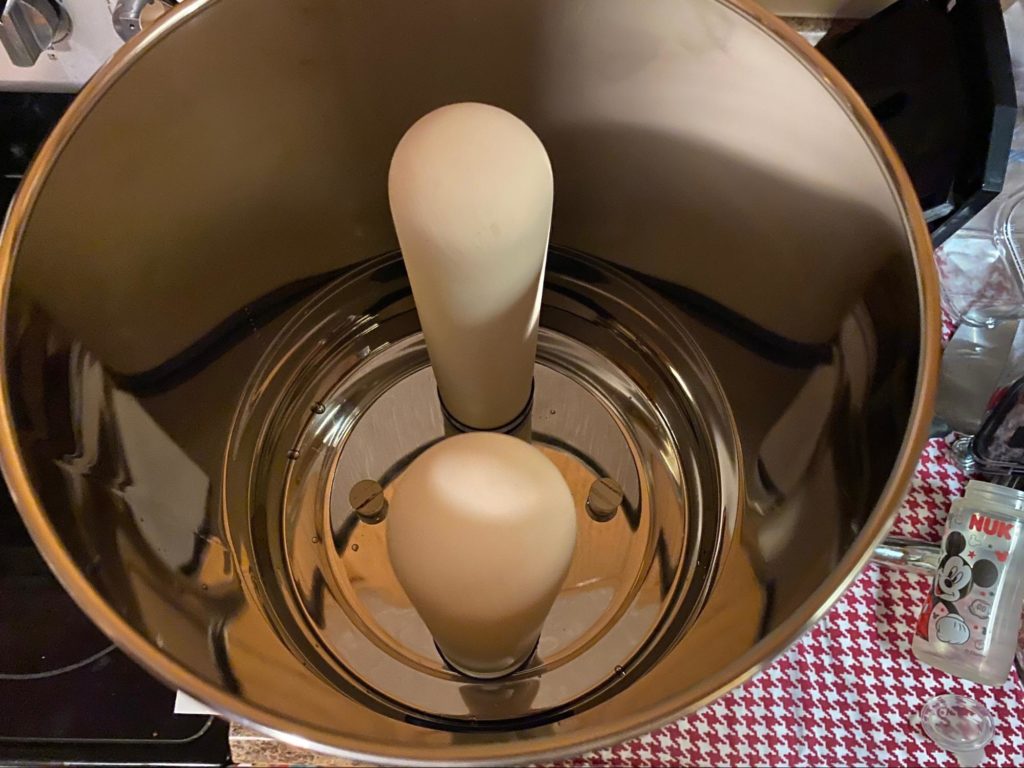
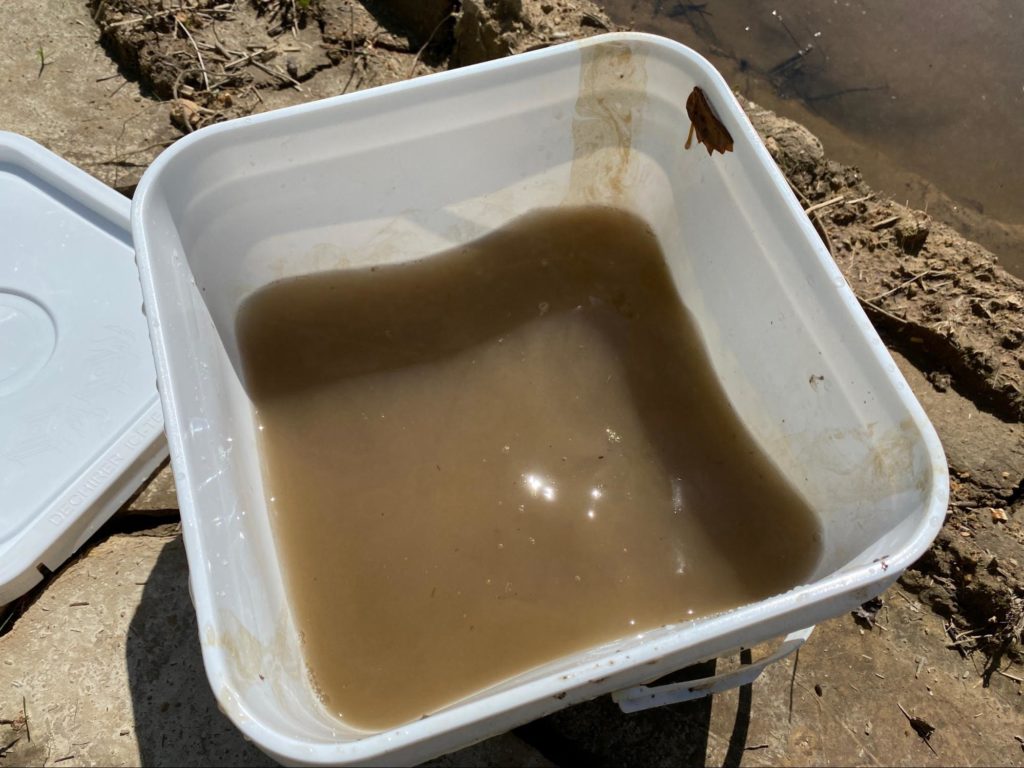
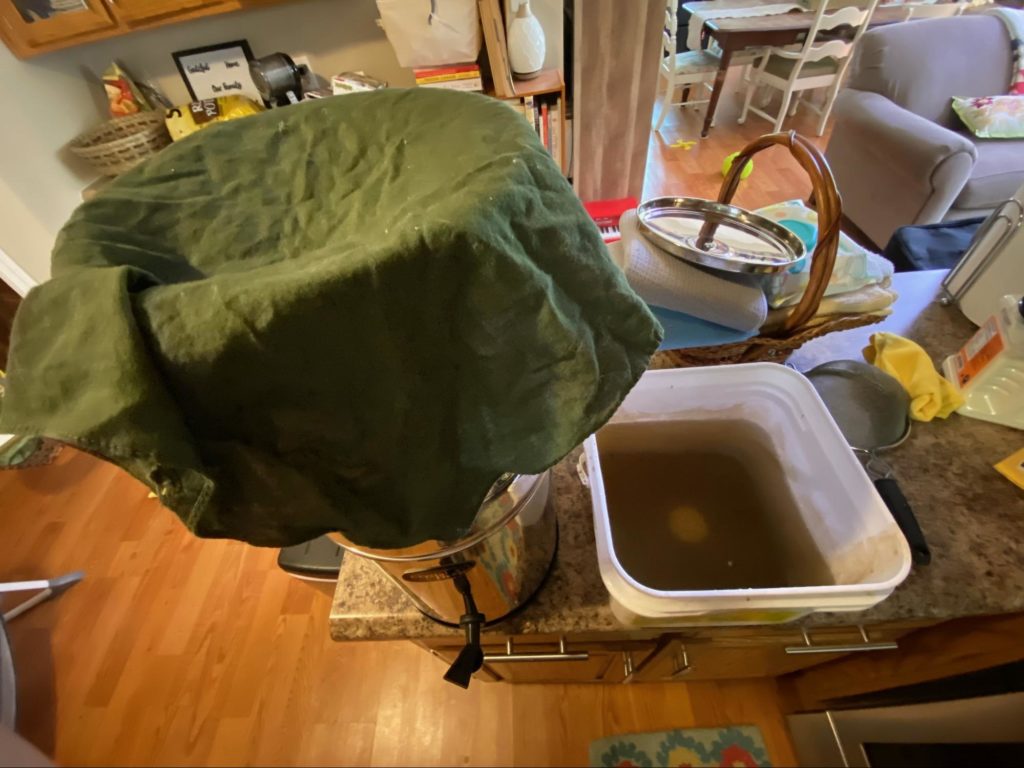
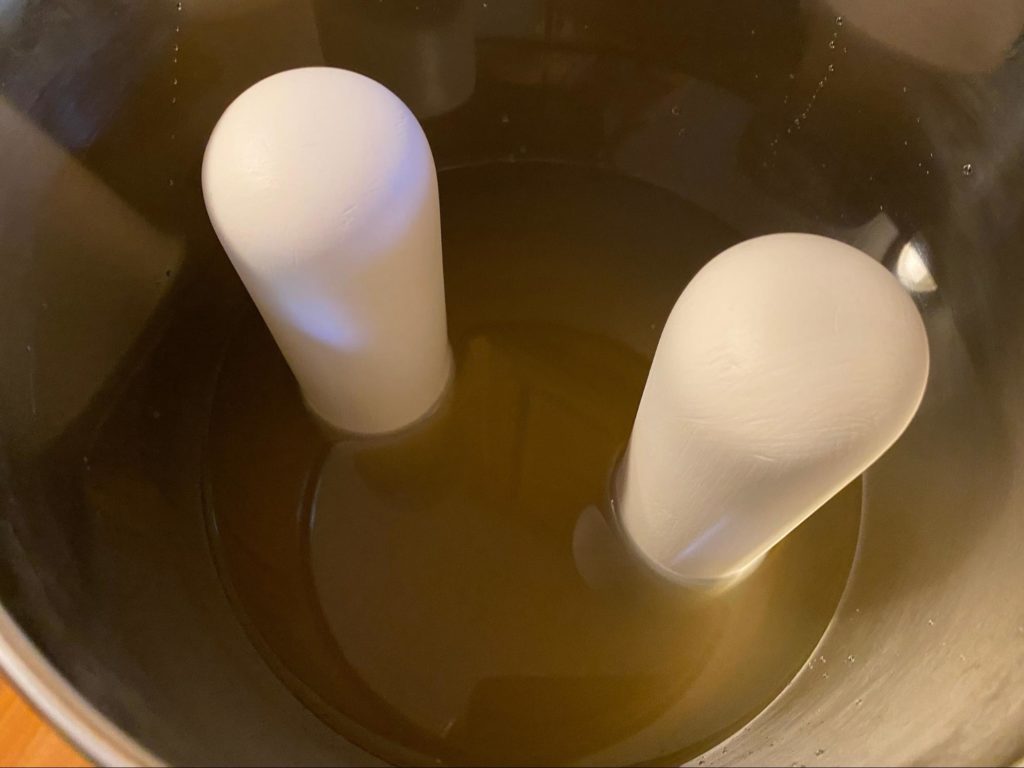
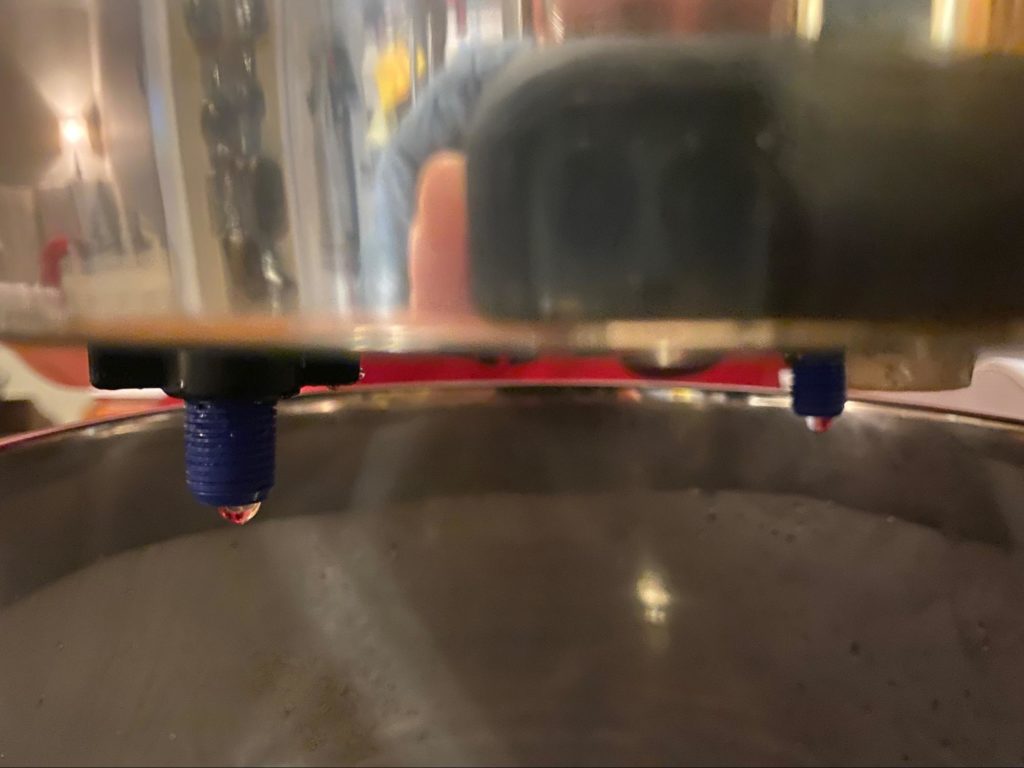
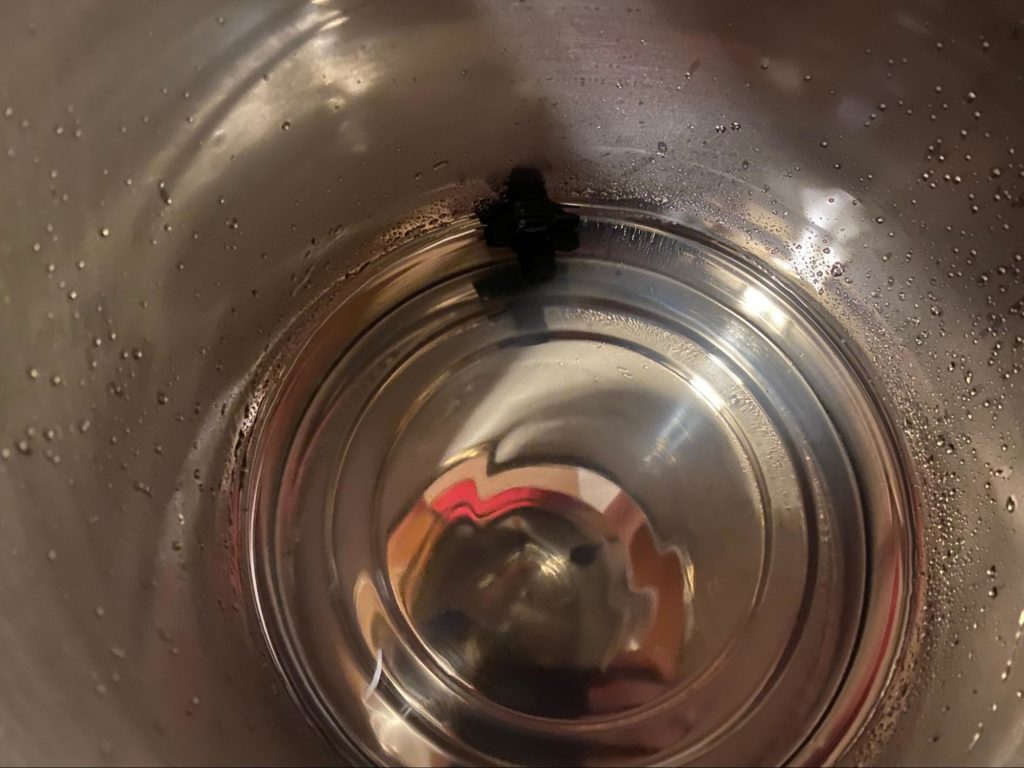
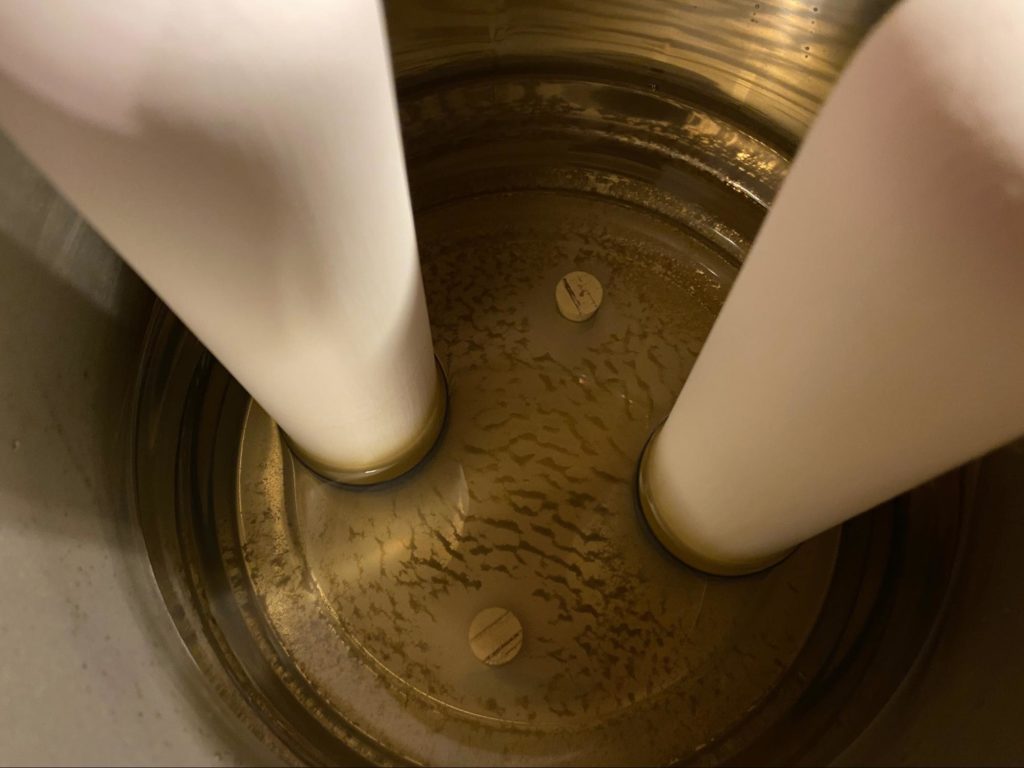
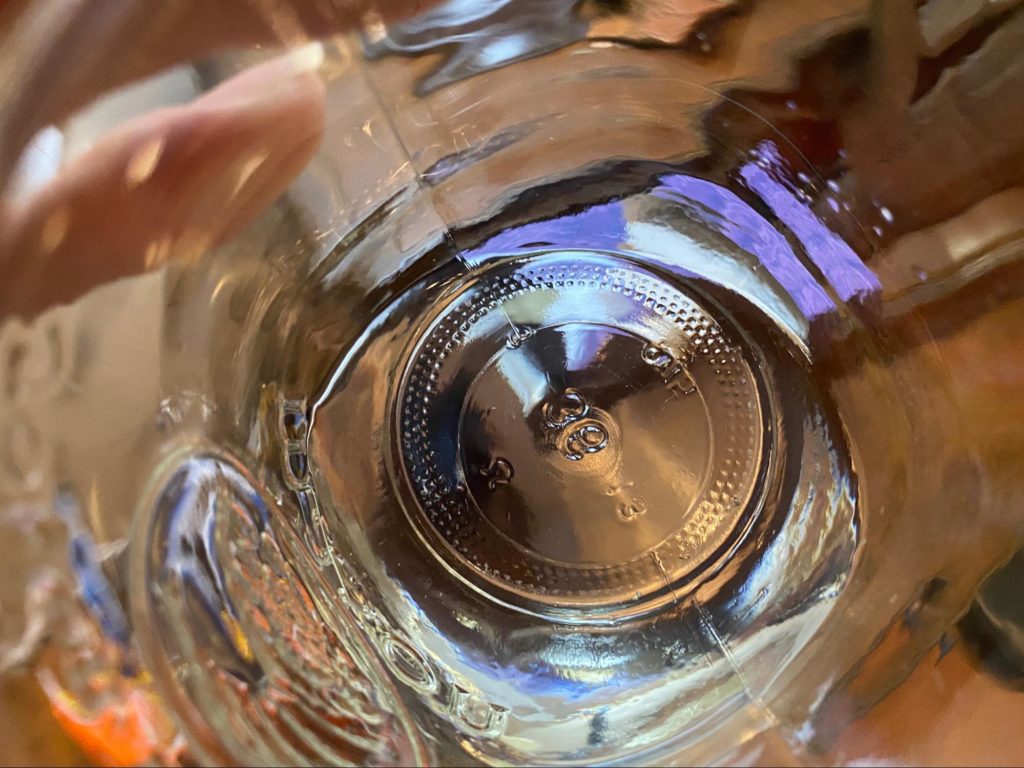
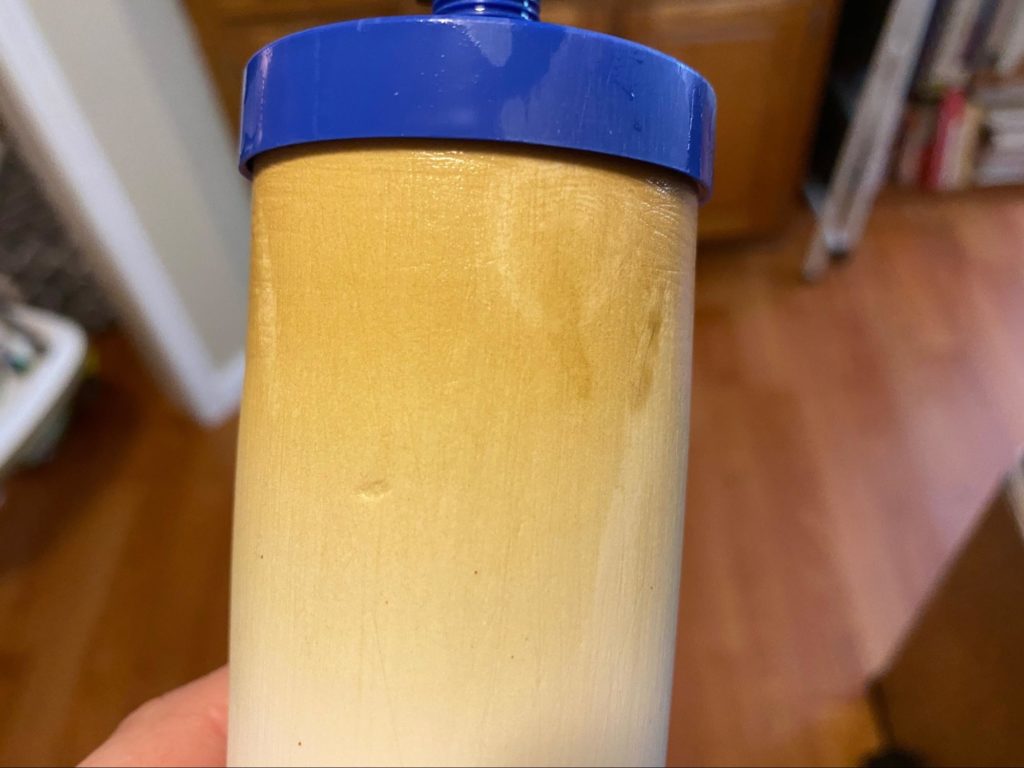
You are reporting the comment """ by on